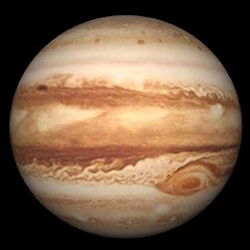Planet Memory Foam
Lesson Plans > Science > PhysicsPlanet Memory Foam

I'm always trying to invent silly scenarios for my Physics students to work through in class; it's a great way to keep their attention as we practice solving problems. The problem outlined here provides a sense of "humorous suspense" as the students wonder if the pilot of the rocket will survive.
First, I pick a student from the class and make them the star of the problem:
"You're flying a rocket to a previously unexplored planet in a distant solar system. You are descending to the planet surface when suddenly your retrothrusters die, leaving you in freefall. When your rocket is"From that point it takes six seconds for your rocket to crash land on the planet surface. But it's not all bad news; it turns out that this planet is made entirely of memory foam, so when you hit the planet surface, you're going to sink down into the surface, creating an impact crater 0.1 miles deep.
"The big question for the day is: Will you survive your crash landing?"
We work through this problem together on the board, with me taking suggestions from students on how to approach the problem. Some highlights of the discussion are below:- This problem gives me the opportunity to help students clearly understand that it's not the velocity that might kill her, but the acceleration. We use 5 g's as the threshold that the student can survive, or 5(32.2) = 161 .fts2
- We have two phases to this problem: Freefall and Impact. Students will hopefully recognize that in order to answer the question, we have to find both the Freefall acceleration and the Impact acceleration. If either of these is above 161 , the student does not survive.fts2
- For this problem I provided units in the English system because we mostly use Metric, and once in awhile I need to give students a reason to brush up on English units. Convert to metric if you prefer.
- The problem provides three pieces of information about the Freefall phase (vi, d, and t), but only one piece of information about the Impact phase (d). Students will have to infer that vf = 0 in the Impact phase, and also recognize that vf in the Freefall phase is vi in the Impact phase.
- Solving the Freefall phase gives the acceleration due to gravity on Planet Memory Foam, which is roughly three times the acceleration due to gravity on planet Earth. This gave rise to one student wondering how big Planet Memory Foam is. This could be a bunny trail you take in class, or encourage students to figure out on their own, by researching the density of planet Earth and the density of memory foam. If you wish to pursue this question in class, the density of earth is 5.5 , and the density of memory foam is 0.08gcm3. Also, don't forget that volume is related to the cube of the radius when you work through the ratios.gcm3
- Since the acceleration due to gravity on Planet Memory Foam is less than 161 , the student survives the Freefall phase.fts2
- Once students realize the rocket's velocity at the moment it strikes the planet surface, they start to get skeptical about the student's survival odds. The final calculations show that the student does not survive.
- You can then talk (if you choose) about the fact that the acceleration is not actually constant during the Impact Phase; the more you compress something, the harder it is to compress it further. So the rocket will face little resistance at the beginning of the Impact Phase; as it descends into the impact crater it is creating, the foam compresses more and more, and the resistance to motion increases. Thus, since the students have calculated the average acceleration, and we know that the beginning acceleration is less than that, we can conclude that the final acceleration is actually greater than the average.
- As a follow up problem, I asked, "How deep would the impact crater have to be for the student to survive?" This requires them to recognize that d is no longer known in the impact phase, and the acceleration would be the maximum value the student could survive (161 ). We work through the calculations and find that the impact crater needs to be aboutfts2of a mile.310
All in all, I found this problem to be not just fun, but also instructive on a variety of topics.

